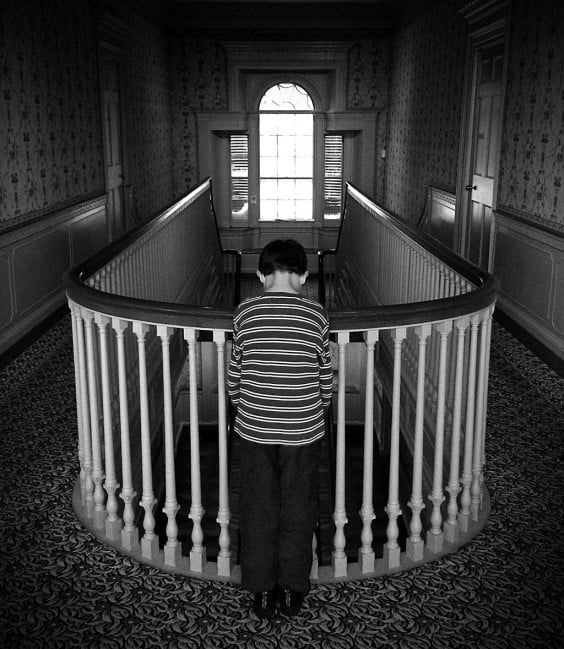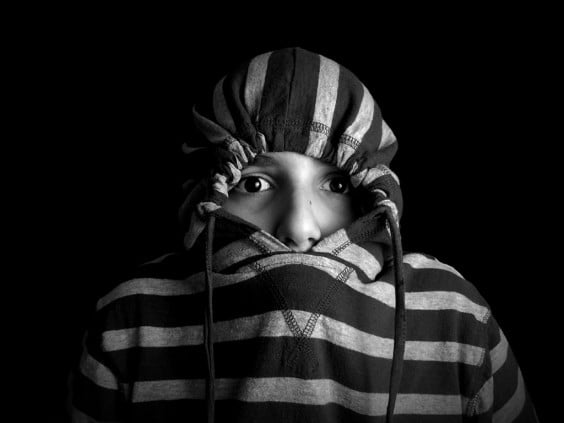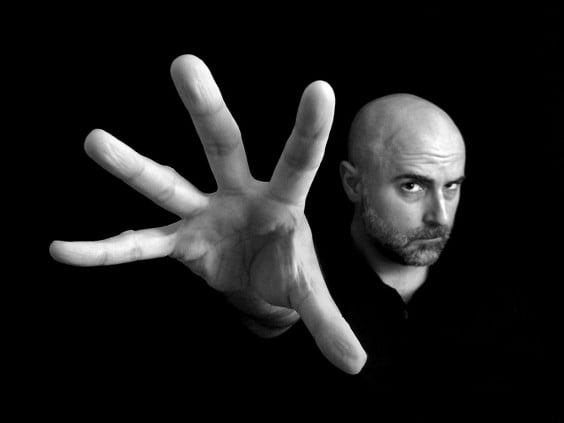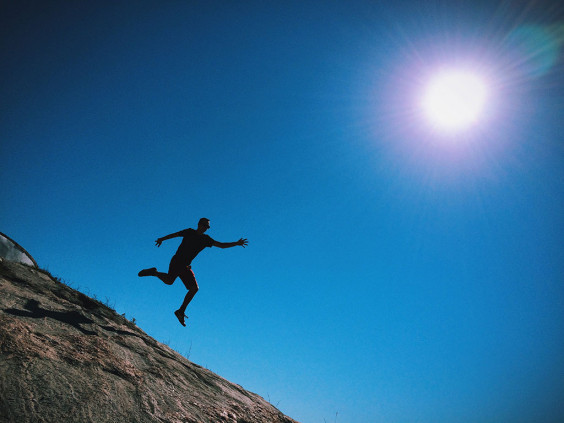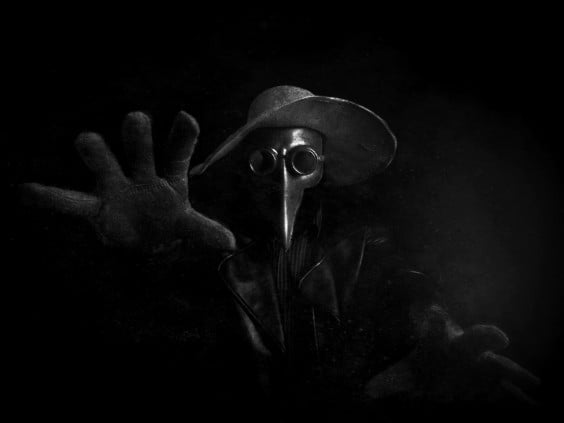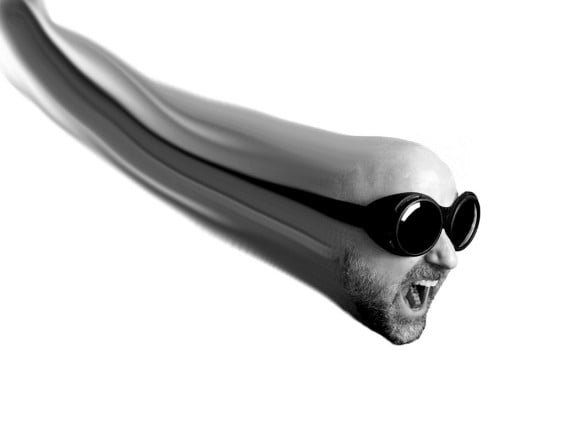Rob DePaolo is an iPhone photographer from New England, USA. He has a very distinctive style that features high contrast black and white imagery. Rob has always had a passion for photography and harboured a dream of being a professional photographer ever since school in the 1990’s. However, due to a variety of factors, that path was put on hold for more than a decade while life continued on… It is only now through iPhone photography that Rob is finally finding his platform to showcase his photographic work.
Rob’s work has been featured on numerous Instagram and Facebook feeds, JustBW.eu website gallery, TheAppWhisperer.com, photoone.org, and other websites. In addition, he has received honorable mentions in the Mobile Photography Awards, iPhone Photography Awards, and was recently selected as a finalist in the Shadow Stories contest hosted by the MPAs with his photo exhibited digitally in NYC and in print at the Holcim Gallery in Milton, ON, just outside of Toronto. A few of his photos were on display recently at the Empty Spaces Gallery in Putnam, CT. Rob is also excited to have been selected as a featured photographer in an upcoming issue of Shooter Magazine.
I was keen to finally catch up with Rob to find out more about his approach and views to iPhone photography and how he takes his amazing black and white iPhone photos.
How were you first introduced to iPhone photography?
While I certainly knew that I could take photos with my phone when I got my first iPhone (an iPhone 4), it was through my high school friend Chris Stern (@chris_stern) that I was first introduced to the rapidly growing mobile photography community. After that, I was hooked.
What inspires you to take photos with your iPhone?
What I love most about mobile photography is that it is so accessible. My phone is always with me, so I essentially have an entire photo studio in my pocket at all times. This makes is easy to react to spontaneous situations and capture an image that would be difficult, if not impossible, to capture with any other type of camera. The portability of mobile photography also makes it easy to review and edit photos on-the-go for quick and easy sharing.
All this being said, I also use my iPhone for planned, conceptual images where I could also just as easily use my DSLR. However, it is once again the flexibility of the iPhone that keeps me coming back to it as my primary camera. That being said, I have been doing more DSLR work over the past year or so as I have been expanding my portfolio to include other forms of photography. As they say, “Different tools for different results.”
How would you describe your style and approach to your photography?
I like to experiment with different subjects depending on my situation at any given time. However, my primary interest is in portraiture and various forms of darker, noir-style conceptual photography. I also enjoy infrared landscape photography, but I have to use a DSLR exclusively for that.
Because of my experience with B&W film photography early on, I still tend to prefer B&W photography regardless of the subject matter. However, one thing that many folks don’t know about me is that I do like to shoot color photos as well, but I have only recently started to share my color work online.
What is it about black and white that you find so fascinating?
My wife likes to joke (at least I think she’s joking) that I take great color photographs and then “suck the life out of them” by converting them to B&W. On the contrary, I believe that the medium of B&W photography strips away the “distracting” colors and lets the soul of the image shine through. In particular, there would be no photography without light, and I feel that monochromatic imagery really allows light to take center stage in one’s photography.
In addition, due to my slightly obsessive fascination with masks and mysterious, slightly creepy imagery, I believe that B&W photography helps to add to the darker mood of these images that I create.
How has the iPhone photography community helped to inspire you to develop your style and push the boundaries of your photography?
The mobile photography community is just amazing. I have never before found such a welcoming and supportive group of artists. From day one, I felt right at home in this global community. There are so many great people and resources dedicated to helping folks improve their skills that it would be hard to mention them all, but the ones that I have drawn the most information and inspiration from are Mobiography, AMPt, WeAreGrryo (formerly WeAreJuxt), and The App Whisperer—to name a few.
Honestly though, I have learned the most by simply taking the time to continuously study the work of other mobile photographers and ask questions when I can. Not only has this approach helped me learn and develop my own photography, but it has also been a great way to connect with other artists in the community.
What apps do you use and what’s the post production process you follow to achieve the clean and sharp, contrast in your photos?
For the vast majority of my B&W work, I begin by capturing the original photo (in color—no in-camera B&W filters for me typically unless I am playing with Hipstamatic) with a camera-replacement app such as ProCamera 8, 645 Pro or PureShot. The reason for this is that these apps offer a greater range of control and also make maximum use of the iPhone’s sensor to deliver the highest-resolution image possible. I almost always capture my images in TIFF format (offered by all three of the apps above) as this results in a much higher-quality original image than the native camera is capable of.
Even if I choose the highest quality JPG setting in these apps, I still end up with a better image than the native camera. As I always shoot in RAW mode with my DSLR, I long for the day when we can get true RAW images out of the iPhone as this will provide us with even more latitude in post-processing. But that is a topic for another day…
Almost all of my processing is done in Filterstorm Neue. I find that, for me, Filterstorm is the closest thing to professional desktop photo editing software that I can get on my iPhone. I typically make a few tweaks to the color version of the image before converting the image to B&W. I then make further adjustments to the brightness and contrast through use of the Curves control. Finally, I almost always add a vignette to my B&W photos, whether subtle or bold.
This is my typical workflow, but depending on the photo, I may also use the cloning tool to remove some unwanted items, and I sometimes use AfterFocus to blur backgrounds and simulate a shallow depth of field. And sometimes I’ll use Mextures to apply subtle textures to my images. However, I prefer to do all of my editing in filterstorm when possible as it allows me to maintain TIFF quality from start to finish. Not many editing apps support the ability to save as a TIFF. Yes, I am a bit obsessed about image quality and file size. It’s the DSLR influence…
As mentioned before, I am also starting to do more with my color photography, and while I do some of that in Filterstorm, I am also starting to make great use of the post-processing capabilities of VSCO Cam as I think it really shines when it comes to color work. As with most editing tools, subtle adjustments go a long way, and I find that I only have to adjust the majority of settings in VSCO Cam by one or two clicks to make a significant difference.
Are the any other iPhone photographers that have influenced or inspired you?
Tough question. There are so many great mobile photographers out there right now that it’s hard to pick just a few. So many artists inspire me by their bold creativity and the skill with which they create beautiful images with a smartphone. But since I have to select a few, there are some who have definitely had a significant impact on my own work including Jeff Simpson (@breadgeek), Paul Moore (@mooro), Elizabeth Spence (@wellettas), and as mentioned earlier, Chris Stern (@chris_stern). One of the things that all of the these artists share is a keen sense of how to incorporate light into their photographs (whether B&W or color).
There is one other photographer I would like to highlight that has been a big influence on my darker conceptual art in particular. Lasse Hoile (@lassehoile) is a Danish artist who works with various media (including mobile photography) that I have admired for many years now after first encountering the work he has done for a number of progressive musicians/groups including Steven Wilson, Porcupine Tree, Blackfield, and Dream Theater. While he is not strictly a mobile photographer (and neither am I really), he does create a percentage of his art with his smartphone, but I draw inspiration from his entire body of work.
This raises a simple point that I would like to make. While I am a huge proponent of mobile photography, I really just consider myself to be a photographer who uses mobile photography as one of my creative channels. I honestly think for photographers (mobile or otherwise) to grow as artists, we need to look to all types of photographers and other artists for inspiration. An oil painting of a landscape could potentially have a greater impact on one’s landscape photography than other landscape photos. It’s all in the creative vision.
What advice would you give to those who are new to iPhone photography?
Start by picking a small handful of camera and editing apps and learn them inside and out. It’s far too easy to keep acquiring new apps as they come out without ever learning the full power of any one of them. Start simple and expand from there as your style and skills develop.
Shoot LOTS of photos. Review them. Delete LOTS of them. Edit a few to completion. Share them. Enjoy. Repeat over and over again. Back in my film days, a general rule of thumb was that for every roll of 36 exposures that you shot, you would be lucky to end up with one photo that was worthy of being printed. In today’s digital age, the medium is much different, but I still find that ratio of 36 to 1 to be about right. It doesn’t always seem like it when I look through my camera roll, but I have to remind myself that I delete many as I am shooting, so much of the “junk” is only on my phone for a few minutes.
Finally, study the work of others that you admire. Start with other mobile photographers on Instagram, EyeEm, Flickr, FaceBook, etc., but don’t stop there. Study the masters of photography. For example, if you like B&W landscapes, study Ansel Adams. It may seem a bit cliched, and his medium (film) may have been different, but it’s the vision that matters. Personally, I have always drawn inspiration from some of the great B&W portrait photographers such as Duane Michals, Arnold Newman, and Robert Mapplethorpe. They are not mobile photographers, but there is much to be learned from their sense of light, composition, and subject matter.
Can you tell us the story behind your three favourite photos?
It’s hard to pick just three, so I’ll go with three fairly recent photos that I am particularly fond of:
Toxic…
This one is the oldest of the three, but is of particular significance to me as it represents the beginning of my mask imagery. It is also one of the first conceptual shots I did in my makeshift home studio. I had a distinct image in my head as to the photo I wanted to create, and the end result is virtually identical to what I had planned. In fact, I used this photo on my business cards as I feel that it does a great job of representing my primary style of work.
At Day’s End…
This was a very spontaneous shot that I captured while walking along the beach with my family. I noticed this girl, wrapped in a towel, that kept running back and forth from the water to the beach. It looked as if she was struggling with whether or not to call it a day and leave or go back in the water for one last swim. This photo is a perfect example of how an iPhone (or other smartphone) excels at capturing spontaneous moments that would be difficult to grab with a DSLR or other camera.
Friendship Knows No Bounds…
Not only is this a recent self-portrait with my favorite amphibian, but it is also another example of a pre-planned conceptual shot that I did in my studio. While I have always been a big fan of using natural/available light in my photos, I have recently become quite comfortable in a studio setting where I have full control over all aspects of the lighting.


